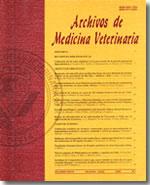Additive and non-additive, direct and maternal genetic effects for growth traits in a multibreed population of beef cattle
Main Article Content
Abstract
Growth data of 4319 calves, obtained from a herd in New South Wales, Australia in 1989- 1997, were used to estimate additive and nonadditive, direct and maternal genetic effects in a multibreed population on crossbred and purebred Angus, Gelbvieh, Polled Hereford, Red Angus and Santa Gertrudis. Age-adjusted weights to 200 (W2), 400 (W4) and 600-day (W6), were analyzed using a multiple-trait animal model including the maternal genetic effect for W2. Direct breed, maternal additive genetic effects (Santa Gertrudis vs. any other breed) and direct dominance effect (individual calf breed heterozygocity) for all studied traits, were included in the model as fixed covariates. Medium direct heritability values are high enough to allow genetic progress in the population from selection of best animals for W2, W4 and W6 using an animal model. Different emphasis on each trait could allow changes in the growth curve from 200-600 days of age. Maternal heritability for W2 was close to zero, indicating a low interference with direct effect genetic progress in growth traits and a reduced value for selection for this effect. The growth potential in Gelbvieh and Angus calves was higher than those for other breeds, with Santa Gertrudis being the lowest. Santa Gertrudis was superior for maternal breed effect to the average of other breeds. The estimate for the dominance average effect was positive for W2 and W6 and negative for W4 and lower than the maximum difference between direct breed effects.

